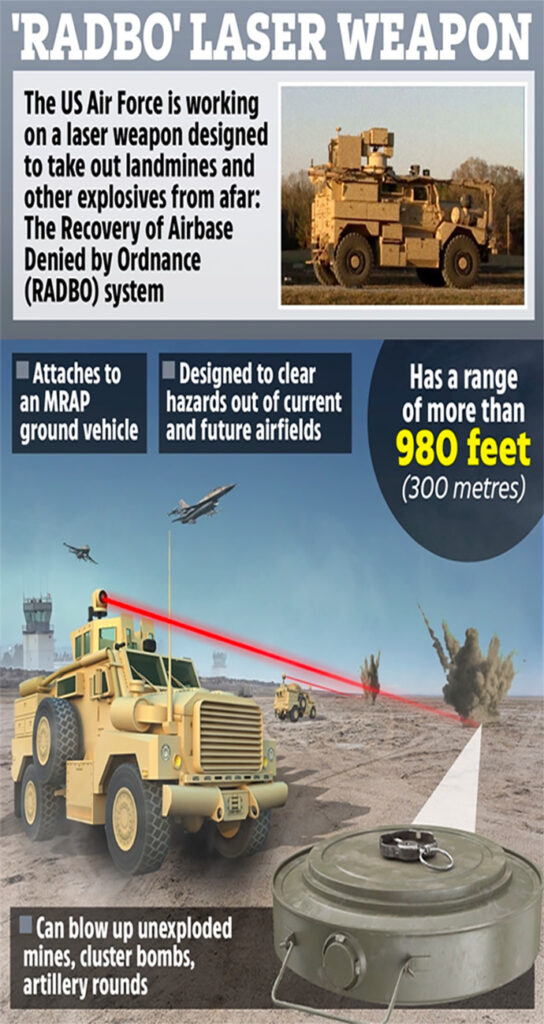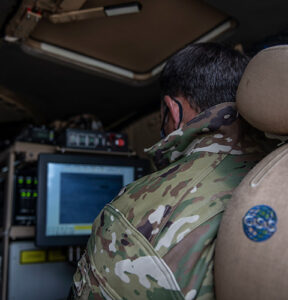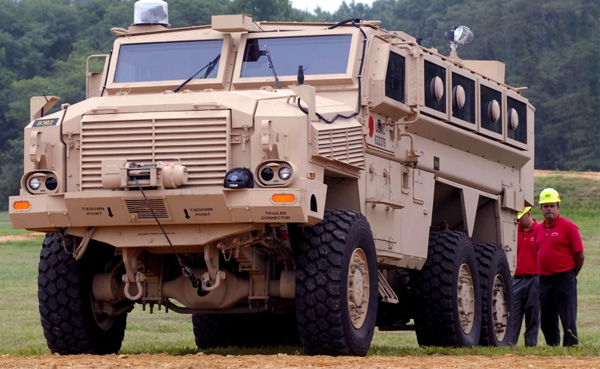Uncategorized
MRAPs with (friggin) Lasers and Robotic Arms: The New Tool the Air Force Will Use to Handle Bombs on the Flight Line
Science Fiction, or Real Life?
These armored vehicles sound like Transformers and Decepticons have finally been revealed on earth, but they will actually help the Air Force manage explosives on a runway. An unexploded bomb can be a threat in any situation, but when the unexploded bomb in question is on a runway – that equates to total chaos. The Air Force now has a new tool to help eliminate this type of threat. The Air Force is investing in an armored vehicle with powerful lasers and robot arms to safely clear unexploded bombs off runways. In February, the service branch announced that these useful vehicles will begin to be used in the fall of 2022. These machines, and their operators, will work to make sure runways are able to launch and receive aircraft without explosive problems.
An unexploded bomb can be a threat in any situation, but when the unexploded bomb in question is on a runway – that equates to total chaos. The Air Force now has a new tool to help eliminate this type of threat. The Air Force is investing in an armored vehicle with powerful lasers and robot arms to safely clear unexploded bombs off runways. In February, the service branch announced that these useful vehicles will begin to be used in the fall of 2022. These machines, and their operators, will work to make sure runways are able to launch and receive aircraft without explosive problems.
`The Tech Specs
 These new armored robotic vehicles are called “Recovery of Airbase Denied by Ordnance”or “RADBO”, and their design was based off of MRAPS, the Mine Resistant Ambush Protected vehicles that the Pentagon used for patrols in Iraq and Afghanistan. MRAPs are already designed for the survival of their passengers against explosives, with special v-shaped hulls directing the blast force away. MRAPs have been used by NASA, and in some cases police departments as well.
These new armored robotic vehicles are called “Recovery of Airbase Denied by Ordnance”or “RADBO”, and their design was based off of MRAPS, the Mine Resistant Ambush Protected vehicles that the Pentagon used for patrols in Iraq and Afghanistan. MRAPs are already designed for the survival of their passengers against explosives, with special v-shaped hulls directing the blast force away. MRAPs have been used by NASA, and in some cases police departments as well.Bombs find their way to runways for a variety of reasons. There are cases of enemy attacks with cruise missiles causing destruction from afar, or hostile air forces flying close enough to try a bombing attack from the sky. Ground attacks can also cause explosives to end up on the pavement like army artillery or resulting demolition from nearby mortars.
Another possibility is the Air Force itself accidentally ending up with a loose bomb from an aircraft takeoff or landing on the tarmac. Whatever the event that led to the bomb being there, the most important thing is its removal so that the runway can function safely again.
An explosion on a runway is an immediate problem; although as long as the debris can be cleared, the runway is able to be repaired and things can continue to move. An unexploded bomb is a more complicated situation. The Explosive Ordnance Disposal (EOD) crews may not know if the bomb is a dud, or if the clearing process will trigger an explosion.
How RADBOs Actually Work
 Instead of sending a highly skilled human in a simple protective suit to defuse the bomb by hand, what RADBO can do seems like something out of a sci-fi action movie. The RADBO MRAP will mount a three-kilowatt Zeus III laser and a robotic arm, in a vehicle that weighs approx. 18 tons and it will essentially shoot the bomb with a laser instead.
Instead of sending a highly skilled human in a simple protective suit to defuse the bomb by hand, what RADBO can do seems like something out of a sci-fi action movie. The RADBO MRAP will mount a three-kilowatt Zeus III laser and a robotic arm, in a vehicle that weighs approx. 18 tons and it will essentially shoot the bomb with a laser instead.With enough power and time, a laser could burn through a bomb casing, blowing up the explosive from a safe distance. The robot arm on the vehicle is designed to allow crews to investigate craters without physically getting in them, and to also move bombs to places better suited for detonation. The RADBO vehicle as designed becomes a holistic answer to clearing potentially explosive detritus from places it should not be.
Future Implications
For now, the Air Force envisions these vehicles as better safety equipment at existing bases. In the future, a conflict could call for the creation of new runways closer to the front of that conflict, and RADBO vehicles could allow for rapidly assembled airstrips to remain operational even in the face of hostile attacks.
In the meantime, having the RADBOs on hand can turn a dropped or otherwise inadvertent unexploded ordnance on a base into an imminently solved problem, instead of a hazard that disrupts for weeks, years, or even decades.
Like reading this post? Check out more great blogs HERE
Do you like challenging yourself? Find out about our self study FCC GROL program HERE

